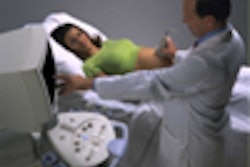Harcourt Health Sciences, St. Louis, 1997, $99
The 1994 edition of the Primer was a timely addition to the pantheon of radiology literature, filling the niche between various multi-volume tomes and bullet-saturated, information intense books such as Wolfgang Dahnert’s Radiology Review Manual.
This second edition of the Primer has incorporated more information on cross sectional imaging, as well as 233 figures and 108 additional pages. A third author, Dr. Mark Rieumont, has also been added, along with a $34 increase in price to $99.
The chapters have been organized to address the primary educational components of a radiology residency program, and the text is presented in an outline format to allow for quick reference. The design of the book is specifically intended for the radiology resident, and its organization reflects that intent.
This edition offers more complete information and is better organized. The outline format is more readable than other reference text manuals with bulleted information, so one may rapidly extract information from the manual at an average reading pace.
The idea of the Primer is to provide a solid foundation on which to build more sophisticated subspecialty expertise. The presentation approximates the type of teaching that is delivered at the light box or in front of the PACS monitor, so residents should have a certain comfort level with this style. The illustrations are simple but effective.
Some chapters are organized by anatomical location (i.e. gastrointestinal, head and neck, etc.); others are organized by disease process (i.e. chest, cardiac, and musculoskeletal). There are also chapters on contrast agents and imaging physics. All of the chapters are tabbed for quick access.
Despite these modifications, this edition retains most of the institutional bias found in the first edition (not so surprising given that the authors and contributors are from a single institution). To their credit, they identify and recognize this bias in the preface, but a greater effort to decrease the institutional partiality would make the information more widely applicable.
The Primer could also benefit from other modifications. For example, the text contains a number of mistakes (mainly typos). Although the illustrations are effective, they are mostly rudimentary line drawings. Black and white, shaded anatomic drawings would make the figures more aesthetically pleasing without significantly increasing the production costs. The index is functional but could be expanded. The reference information could also be expanded and more closely applied to the text within each chapter.
In summary, the Primer is easy to read and comprehensive. This is a useful companion for residents to have on-hand, either at conferences or at their reading stations. The Primer offers a solid foundation in diagnostic radiology, and every radiology resident should seriously consider adding it to their library.
By Dr. Douglas P. BeallAuntMinnie.com contributing writer
Dr. Beall is a staff radiologist in the musculoskeletal division, department of radiology at Wilford Hall Medical Center, Lackland Air Force Base, TX.
If you are interested in reviewing a book, let us know at [email protected].
The opinions expressed in this review are those of the author, and do not necessarily reflect the views of AuntMinnie.com.
Copyright © 2001 AuntMinnie.com



















